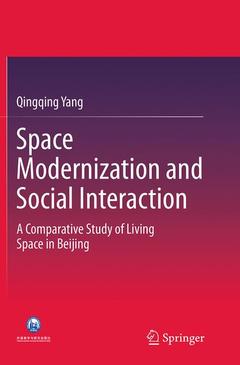Description
Space Modernization and Social Interaction, Softcover reprint of the original 1st ed. 2015
A Comparative Study of Living Space in Beijing
Author: Yang Qingqing
Language: English
Subjects for Space Modernization and Social Interaction:
Approximative price 52.74 €
In Print (Delivery period: 15 days).
Add to cartPublication date: 08-2016
Support: Print on demand
Approximative price 52.74 €
In Print (Delivery period: 15 days).
Add to cartPublication date: 10-2014
152 p. · 15.5x23.5 cm · Hardback
Description
/li>Contents
/li>Comment
/li>
This book concerns the Beijing Hutong and changing perceptions of space, of social relations and of self, as processes of urban redevelopment remove Hutong dwellers from their traditional homes to new high-rise apartments. It addresses questions of how space is humanly built and transformed, classified and differentiated, and most importantly how space is perceived and experienced. This study elaborates and expands Lefebvre?s ?trialectic? of space on a theoretical level. The ethnography presented is a conversation with Tim Ingold?s argument about ?empty space?. This research employs the ethnographic technique of participant-observation to secure a finely textured, detailed and micro-social account of local experience. Then, these micro-social insights are contextualized within macro-social structures of Chinese modernism by speaking to geographical concerns, orientalism and history.
First-hand ethnography of indigenous Beijingers living in a time of transformation
An insightful comparison between the ideas of living space among residents of traditional Chinese courtyards or Hutong and residents living in newer high-rise compounds
A fine mixture of ethnographic observations with macro-level analyses of the structures of Chinese urbanism and modernism
Includes supplementary material: sn.pub/extras



